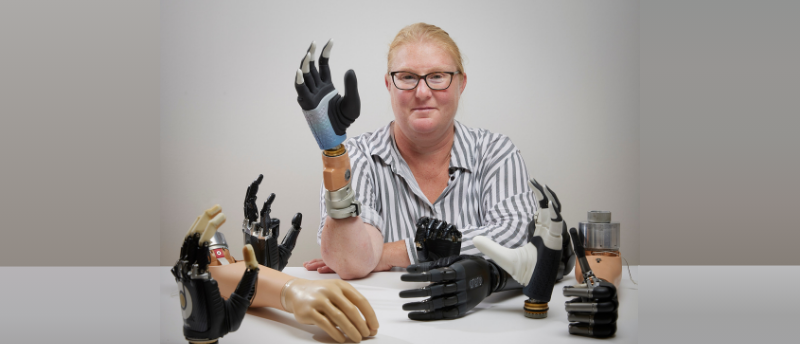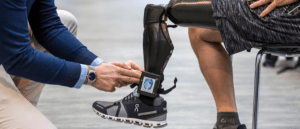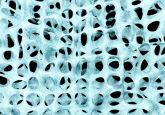Optimizing the human–machine interface of prostheses

An interdisciplinary team of researchers has developed a human–machine interface that improves the prosthetic connection to the residual limb, making it more comfortable and reliably effective.
Prosthetic attachment and control are two of the biggest challenges in artificial limb replacement, causing many individuals to reject even the most sophisticated prostheses. In order to remedy these challenges, a collaborative effort led by Max Ortiz Catalan (Bionics Institute, Melbourne, Australia and the Center for Bionics and Pain Research, Mölndal, Sweden) set out to develop an advanced human–machine interface [1].
The team worked closely with Karin, a Swedish woman who lost her arm below the elbow in a farming accident over 20 years ago. Karin expressed that since her accident, she experienced excruciating phantom limb pain. Additionally, she found conventional prostheses to offer little assistance day-to-day, often feeling that the prostheses were unreliable and uncomfortable. This changed when researchers developed a more functional prosthetic that Karin could wear comfortably all day.
“Karin was the first person with sub-elbow amputation to receive this new concept of a highly integrated bionic hand that can be used autonomously and reliably in everyday life,” reported Ortiz Catalan. “The fact that she has been able to use the prosthesis comfortably and effectively for years during her daily life is testament to the potential life-changing capabilities of this new technology for people dealing with the loss of a limb.”
 Sensory bionic limbs: a success story for neuroprosthetics
Sensory bionic limbs: a success story for neuroprosthetics
Giacomo Valle describes the recent success of his work, creating implantable neuroprostheses that enable bionic limbs to provide sensory feedback for patients and he reveals how the implants used could provide an additional benefit to neuroscience research.
The human–machine interface was created by embedding the prosthetic into the radius and ulna via osseointegration and developing a neuromusculoskeletal implant that connects the user’s biological system to the prosthetic. In addition to strengthening the mechanical connection using osseointegration, researchers rearranged the nerves and muscles in the residual limb to provide more information to the prosthesis [2].
In doing so, the team created a prosthetic arm and hand that can both carry out neural commands and feedback sensory information, allowing Karin to complete daily tasks more easily and effectively. This research marks an important milestone for prostheses development, with the potential to positively impact many lives.
Commenting on the personal impact of this work, Karin shared that, “this research has meant a lot, because it has given me a better life.”





